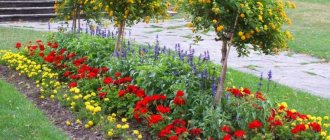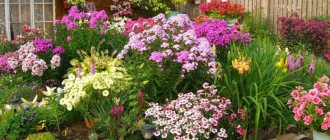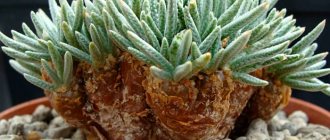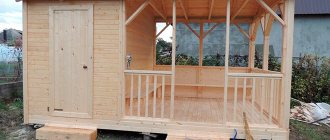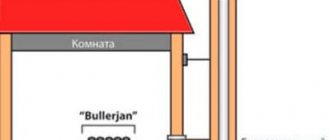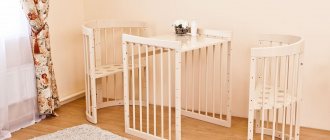What is this flower
Lobelia is one of the most popular types of flowers for the garden or cottage.
Lobelia is one of the popular plants among gardeners. It attracts attention with its delicate flowers, which grow in dense groups, and the ampelous forms hang beautifully from the flower pots, reminiscent of a waterfall. This plant is a perennial shrub of the Bellflower family, which in our country is grown, in most cases, as an annual. The flower's homeland is South Africa, where the flower grows on wet and rocky cliffs, although it can be found almost all over the world in tropical and temperate climates. In total, there are about 300 species of lobelia, of which only 20 are cultivated.
Lobelia: types and varieties for open ground
Description of the plant:
- family Campanulaceae;
- in nature - perennials and annuals, there are subshrubs and shrubs;
- number of species – about three hundred;
- in regions with a temperate climate, the plant is grown as an annual: lobelia does not tolerate wintering well in the ground;
- canopy and ground cover varieties are grown in gardens;
- certain species are used for the production of medical raw materials: the plant contains the alkaloid lobeline, which stimulates the functioning of the respiratory centers;
- the main growth zone in natural conditions is subtropics, rarely – temperate zones;
- About twenty species have been cultivated. Landscape designers often use Lobelia erinus to decorate various areas.
Popular types of lobelia:
- Purple.
- Erinus.
- Dortman.
- Indian tobacco.
The place of lobelia in landscape design
Lobelia is quite often used in landscape design. The flower looks great both on the balcony and in the form of “carpets” near ponds, in alpine slide compositions next to other perennials. In modern design, lobelia is widely used to create coziness in the corners of the garden, for which it is planted in flowerpots or containers. The most common places for planting plants at home are flower beds, borders, and hanging baskets.
In the flowerbed
Before planting a flower on a garden bed or flowerbed, you need to think about what the color scheme of the future composition will be.
Rabatka is a rectangular flower garden in the form of a narrow strip of about 2 m, located along a fence or garden path with other plants.
To combine with lobelia, the flowerbed must be formed from similar shades: blue, lilac, light blue, violet. This combination of colors looks quite attractive: crimson and white, blue and red, yellow and blue.
To combine with lobelia, the flowerbed should be formed from purple, lilac, blue and light blue shades
In hanging baskets
When growing ampelous species, such flowers look most beautiful in hanging baskets in the form of a ball - the plants are a continuous carpet of flowers that hides the frame. One of the easiest options for planting lobelia is coconut liners. Holes are first made in them, filled with soil and plants are planted on the outside of the container.
Ampelous lobelias look great in hanging baskets
In decorative flowerpots
Lobelia looks very attractive in decorative flowerpots, for which you need to choose the right “neighbors”. If you use low-growing flowers in tandem with it, then to diversify the composition you can plant plants with different leaf textures and flower sizes. Large diameter pots are perfect for such plantings. To add dynamism to the flower arrangement, you can combine compact plants with upright growing ones.
An original solution in landscape design would be to use a flowerpot similar to a round vase. In this case, the ampelous lobelia can be planted in the bowl itself, and small bushes of this flower can be planted at the foot, making a light backfill. To add some flair to your garden design, you can install several flowerpots of different sizes with contrasting colors.
To make lobelia in flowerpots look attractive, you need to choose the right “neighbors”
Tower of flowerpots
Lobelia stands out noticeably when grown in a flower tower, that is, pots stacked on top of each other. To form such a composition, take several clay pots with a difference in diameter of about 7 cm. After this, fill the lower container with soil and insert reinforcement, which is buried in the garden soil through a hole in the bottom, thereby ensuring the stability of the flower shelf. The remaining pots are placed on top of each other, putting them on the reinforcement and filling them with soil, followed by compaction. Lobelia is planted in combination with other flowers, starting from the lower pots, after which it is watered abundantly. In such compositions, blue flowers go well with purple and pink petunia, as well as white and red balsam.
As an example, a tower of pots is given, in which the lobelia will stand out noticeably
Features of planting lobelia seeds
The development of the plant before flowering is long, so the seeds have to be sown early. Lobelia flowers are responsive to proper planting and care.
Preparing soil and containers for planting
For sowing, purchase ready-made flower soil or prepare it yourself by mixing equal amounts of peat, turf soil and sand. Fertilizers are not applied during sowing. The soil should be light and moisture-permeable.
Small containers up to 6 cm high are suitable for sowing lobelias. Holes are made in the bottom of each so that excess water can be immediately removed.
When to plant seeds
Oddly enough, the time for sowing seeds depends on the color of the plant petals. Lobelias with white, red and pink petals take the longest to sprout. They can be sown in January if additional lighting is possible. The main sowings begin in early February.
Procedure for planting seeds
Lobelias have very small seeds that are difficult to see in dark soil. It is recommended to first put a small layer of snow on the ground. It will be easier to distribute the seeds evenly. As the snow melts, it will pull them slightly into the ground.
Attention! The seeds are not covered with soil. They germinate only in the light.
If you don’t want to mess with snow, you can fry river sand and mix seeds with it. Then pour a weak solution of potassium permanganate onto the soil in the planting container and spread the mixture over it.
Lobelia varieties
There are a large number of varieties of lobelia, which differ in the length of the shoots, size and color of the flowers. The most popular of them are hanging and bush ones.
Ampelnaya
Ampelous lobelias (climbing) are plants with thin and long shoots up to 60–70 cm. The flowers and leaves on them are scattered along the entire length of the branch. This species looks great not only in hanging containers, but also on the ground. Long branches spread out to the sides without interfering with other flowers. The ampelous look is great for decorating large flowerpots and flower beds, but for paths this option will not be the best, since you will simply walk over the flowers.
Ampelous lobelias have many varieties, here are some of them:
- fiery lobelia;
- Lobelia Gherardi;
- sessile lobelia;
- blue lobelia;
- Lobelia Dortmann.
Ampelous lobelia has many types and is suitable for decorating large flowerpots, flower beds, paths
Bush
Bush lobelia has spreading and compact bushes with a stem length of up to 30 cm. This species is excellent for decorating ridges, flower beds, paths, flower beds, and borders.
It is recommended to pinch ampelous lobelia, which promotes better branching.
Of the bush lobelias, the most popular variety is the Royal Palace variety. It is characterized by bright red flowers and bronze leaves. Bushes are formed in height up to 12–15 cm.
Cascade
Cascading lobelias are the most lush. Compared to ordinary ones, they are less dense, but longer - 35–40 cm. They can be planted on the ground, but a greater effect can be achieved when placed on a hill, for example, in flowerpots, pots, boxes.
Cascade lobelia has less dense bushes than regular lobelia, but longer branches - 35–40 cm
Annuals
Lobelias are also divided into annual and perennial species. Annual plants include those plants that, after flowering, are not replanted and are not transferred to more comfortable conditions for the winter. Of the annuals, species such as Ezhevidnaya, Thinest and Strong are distinguished.
Hedgehog lobelia is a bush 10–30 cm high. It is also called Erinus, blue or border. The plants have small leaves and flowers with a diameter of 1.5–2 cm. Depending on the variety, the flower may have a purple, white, light blue or dark blue color.
Lobelia Erinus has small leaves and flowers with a diameter of 1.5–2 cm, the color of which can be blue, blue, purple, white
The thinnest lobelia reaches a height of 25–65 cm and has large flowers of lilac or bright blue color. The plant is sensitive to dry weather, since even with slight drying the roots are very difficult to recover, which requires constant monitoring of soil moisture. However, this type of lobelia is resistant to low temperatures and can tolerate frosts down to -1–2˚С.
Lobelia Strong has straight stems and lush foliage. A distinctive feature is long flowering. The shoots reach a height of 40 cm.
Perennial
Of the perennials, we can distinguish Lobelia Beautiful, Purple and Brilliant.
Lobelia the Beautiful is a plant with a shoot height of 65–90 cm. The species is quite frost-resistant and can withstand even the most severe cold.
Lobelia the Beautiful reaches a height of 65–90 cm and is a frost-resistant plant
Lobelia Purple grows well in shallow water and marshy soils, so it is excellent for decorating artificial reservoirs. The inflorescences are shaped like spikelets and reach a height of 90 cm. This species is also frost-resistant.
Lobelia Shiny - grows up to 75 cm and has small flowers of bright red color. The leaves can be red or green, depending on the variety. The plant's winter hardiness is average, so it is better to move the flower to cold, frost-free rooms in the winter.
Video methods for sowing lobelia
Sowing dates. In order for the lobelia flower to bloom in late spring or early summer, it is necessary to sow the seeds around February. The date is directly affected by the characteristics of the variety. The type of ampelous lobelia must be sown early because it has a long development period.
Sowing seeds. Lobelia has small seeds, so sowing occurs with some difficulties. Some specialized stores offer granular materials for planting, with which the procedure is simpler and from which 3-5 plants grow. The work is carried out in the following stages:
- The seeds are placed on a sheet of paper and mixed with sand.
- Seeds from the leaf are evenly distributed over pre-disinfected soil.
- The seeds are sprayed with a product that stimulates growth.
- Each container is marked with the date and variety.
- The pots are covered with a transparent material made of glass or film. Every day they will need to be opened and sprayed with a spray bottle.
- They are transferred to a dark place, the temperature of which is 18-20°C. When shoots appear, the pots are removed to a bright area. This usually takes about 3-6 days.
The most popular varieties with photos
There are many varieties of lobelia that differ in color: white, blue, purple, lilac, red. Let's look at the most popular of them.
Sapphire - the plant is endowed with lush and hanging stems, reaching a length of 35 cm. The variety blooms with small, blue flowers with white spots on the petals.
Lobelya Sapphire is endowed with lush and drooping stems reaching a length of 35 cm
Emperor Willie is a dwarf variety with a bush height of no more than 10 cm. The flowers are blue. This variety is excellent for border plantings.
Emperor Willy is a dwarf variety with a bush height of no more than 10 cm
Crystal Palace - the variety is distinguished by abundant flowering with many small flowers blooming simultaneously on the bush. The color of the flowers is deep purple.
The peculiarity of lobelia Crystal Palace is abundant flowering with many simultaneously blooming small flowers on the bush
Cambridge Blue - the variety has low-growing and lush bushes with branches up to 10 cm long. The flowers are small in size, pale purple in color with a blue tint.
The Cambridge Blue variety has low-growing and lush bushes with branches up to 10 cm long and pale purple flowers with a blue tint.
Lobelia Riviera is an annual plant that blooms throughout the season and reaches a height of 10 cm. The flowers are bright pink or dark blue. During the period of abundant flowering, the leaves are almost completely hidden by the flowers. The variety is best suited for planting on borders or in boxes on balconies.
Recent Entries
Chainsaw or electric saw - what to choose for the garden? 4 mistakes when growing tomatoes in pots that almost all housewives make Secrets of growing seedlings from the Japanese, who are very sensitive to the soil
Lobelia Riviera blooms throughout the season and reaches a height of 10 cm
Miss Klibran is a wide bush with a flowering area up to 30 cm in diameter. The plant grows up to 15 cm, the flowers are bright purple with a white center.
Lobelia Miss Clibran has a flowering area up to 30 cm in diameter and reaches a height of 15 cm
Blue fountain - the bush is formed from 6-8 stems no more than 30 cm long. The branches resemble a blooming blue fountain. The flowers are characterized by a blue color with a white spot.
Lobelia variety Blue Fountain is formed from 6–8 stems up to 30 cm long, and the branches resemble a blue fountain of flowers
Meet the flower
The most widespread are plant varieties with flowers in blue and blue shades. A distinctive feature of lobelia flowers is that even pink inflorescences have a purple tint.
Shoots, depending on the variety, can have a length from 15 to 40 centimeters. The direction of shoot growth also depends on the variety; they can either fall down or grow straight up.
Speaking about the description of the plant, it is worth mentioning that with proper placement on the site and care, lobelia can delight its owners with impressive flowering until the fall.
Planting seedlings
You can start planting lobelia in a permanent place of growth only after the frosts have passed and the soil has warmed up well (late May). Depending on the variety, plants are transplanted into open ground or into suitable containers (containers, flower pots). In order for the root system of the flower to develop normally, the diameter of the container must be at least 20 cm.
To plant lobelia seedlings, it is necessary to use containers with a diameter of at least 20 cm so that the root system develops normally
The land for subsequent cultivation of lobelia must meet the same requirements as for seedlings. Too fertile soils should be avoided, as plants will actively grow green mass to the detriment of flowering. This also suggests that too frequent fertilizing is not necessary, especially with nitrogen content. After preparing the soil and selecting a container, lobelia seedlings are planted in the following order:
- Several small holes are made in the container.
- Drainage made of expanded clay or small crushed stone is laid at the bottom in a layer of 5 cm.
- Fill the container with soil and make a hole in the center in accordance with the size of the seedlings' soil ball.
- By transshipment, seedlings are transplanted from cups into pots. To make the bush as lush as possible, several plants are planted in each container.
- Then the root system is sprinkled with soil, watered, a little soil is added and lightly compacted with hands.
Video: planting flowers in pots
For better survival of plants, the pot must be placed in a place protected from the sun and wind for several days. After this, the container is hung in such a way that the plants receive as much sunlight as possible during the day. To make care more convenient, the pot should not be placed too high.
Lobelias in hanging containers should be placed at such a height that they are easy to care for
If the flower is planted in open ground, then a sunny area will be the best option, although lobelia will develop and bloom well in places where the sun shines for only a few hours a day. In this case, seedlings are planted depending on the goals pursued:
- to form a continuous carpet, plants are placed at a distance of 10–15 cm from each other;
- to obtain individual bushes - at intervals of 25 cm.
Seedlings are also planted in open ground using the transshipment method.
Reproduction methods
The flower can be propagated by seeds and cuttings.
Propagation by seeds
Lobelia seeds are planted in the ground in the same way as any other seeds.
When you independently collect the seeds of an ampelous flower, the grown plants may differ from the mother plant.
This applies to hybrid plants. In this regard, it is better to propagate hybrid varieties through cuttings.
From the video you will learn how to grow lobelia from seeds:
Cuttings
- Already mature bushes are taken for cuttings. The flower is dug up along with the root system, without clearing it of soil. After this, they are transplanted into a flowerpot for wintering indoors. The flowering process can last until frost, then a two-month dormant period. Place the lobelia in a cool place and stop watering it abundantly.
- By the end of February, the flower produces young branches. You need to add fresh soil to the flowerpot, and distribute the edges in different directions. A little later, shoots will appear at the base. They need to be cut off and placed in separate containers.
- When the “kids” reach 4-5 cm, they are pinched to get several young plants from the cuttings at once. In May they are placed in open ground.
Lobelia is an architectural and decorative plant that will decorate any corner of the house and garden with its bright, dense blooms. It comes in a variety of colors and is easy to care for, making it an excellent choice for any gardener.
Care
Lobelia after planting seedlings, although undemanding in care, still requires some effort for lush flowering. The basic rules of care are as follows:
- good lighting without direct sunlight;
- watering should be plentiful, but stagnation of water near the roots should be avoided;
- when fertilizing, you need to exclude nitrogen fertilizers;
- in the second half of summer, dense pruning is carried out to stimulate the second wave of flowering.
Watering and fertilizing
Lobelia, like any other plant, needs watering, especially in hot weather. If you have hanging varieties growing in your garden, they need to be watered twice a week. If plants experience a lack of moisture for a long time, the leaves will begin to turn yellow and dry out in the sun. As a result, the flower may die completely. However, this does not mean that it should stand in water - watering should be moderate and timely. As for fertilizing, they are carried out once every 2 weeks, using complex fertilizers for flowering plants and preferably in liquid form.
One of the important conditions for the normal growth of lobelia is moist soil.
Trimming
During the entire growing season, lobelia is pruned several times. However, this procedure is most important after the first flowering, which ends in mid-summer. Trim the plant so that only 5 cm of stems remain above the ground. As a result, 2 weeks after this procedure, a second wave of flowering begins, which in most cases is more violent than the first. Plus, with the help of pruning, the aesthetic issue is resolved by removing faded stems.
Video of sowing lobelia seeds for seedlings
Caring for seedlings. To avoid condensation, it is necessary to remove the coating from the containers for 30 minutes every day. With the appearance of sprouts, the temperature should remain at 13-17°C. To ensure their development is uniform, it is recommended to use additional fluorescent lighting if natural lighting is not enough. When the height reaches a centimeter, the shelter must be gradually removed. If this is done abruptly, the plant may be seriously injured.
Picking. This procedure requires various tools, such as toothpicks, tweezers and the like. They are needed for convenient, neat separation of seedlings. Some people use a regular spoon to cut the soil into the desired pieces and move it into new separate containers with pre-moistened soil. This work must be carried out approximately 30 days after the sprouts appear, and in no case earlier. When 7 days have passed from picking, fertilizing is carried out with ½ dose of the composition for house plants.
Topping. When the seedlings reach 3-4 centimeters in height, they need to be pinched. To do this, their tops are cut off with scissors. This procedure helps the lobelia become bushier and develop a good root system.

